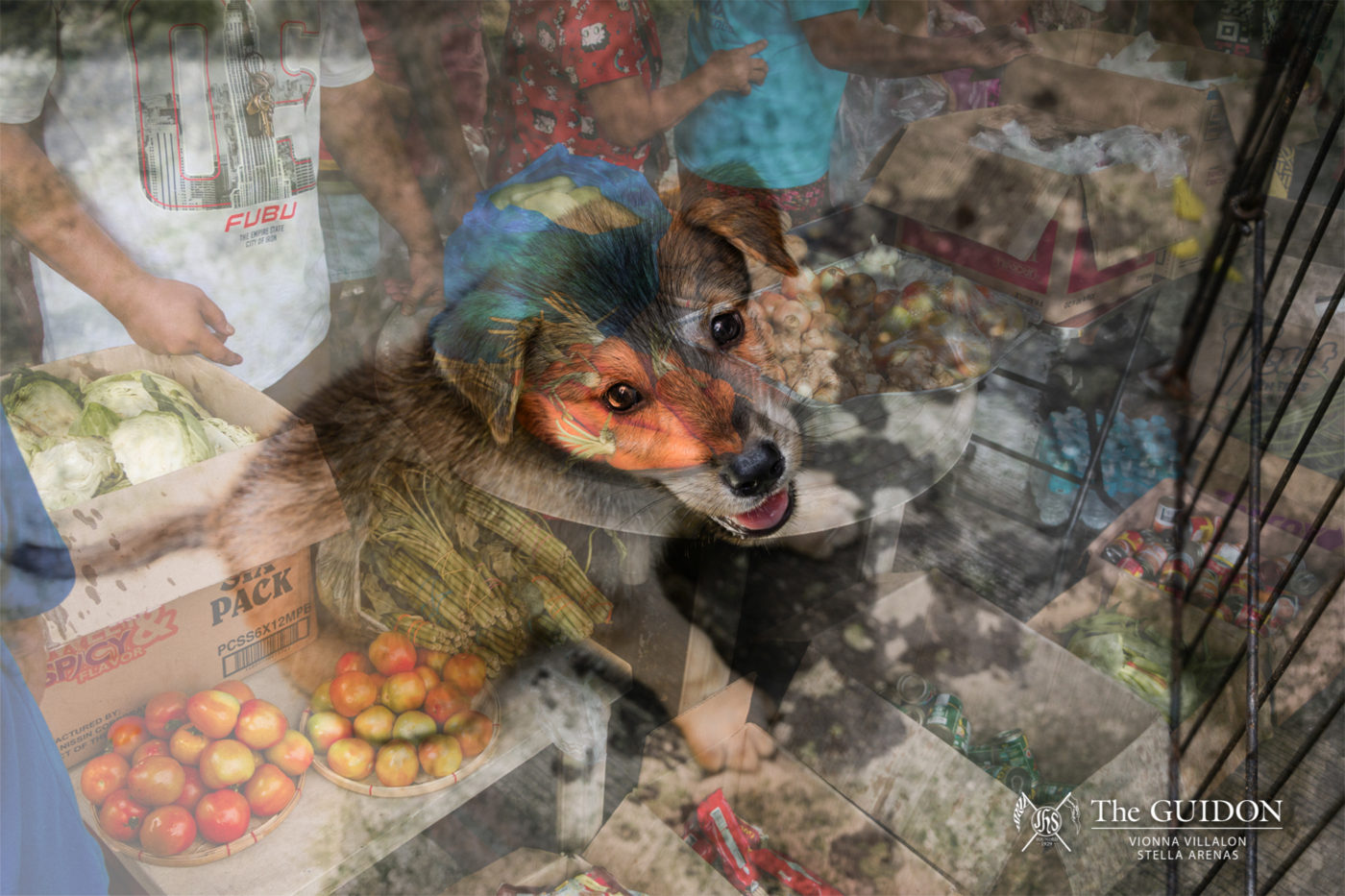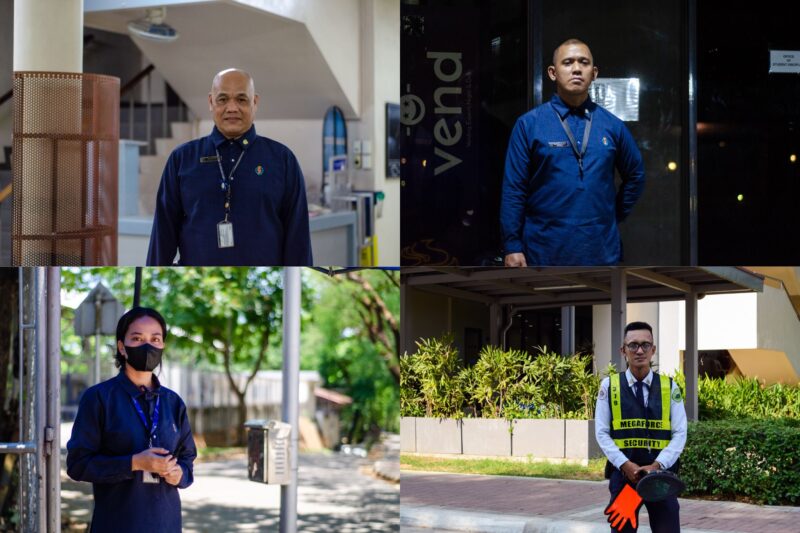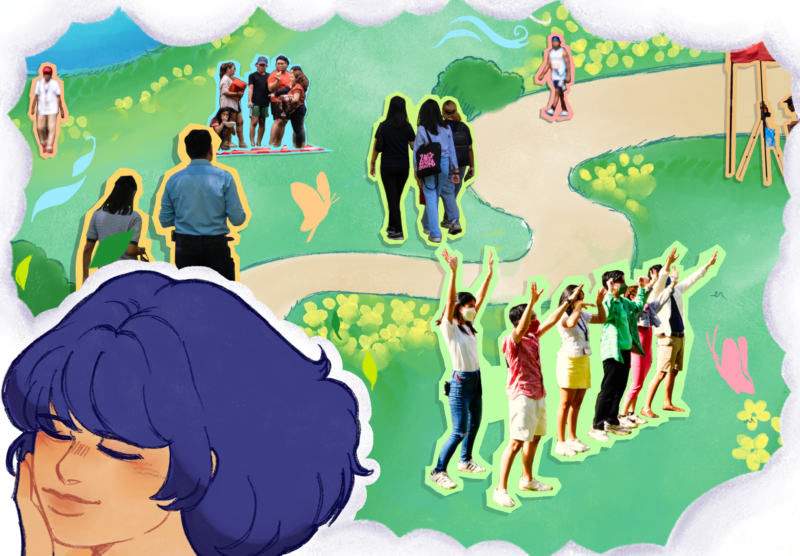Netizen-led rescue groups transform the civic engagement landscape from on-ground to online, as rescuing both produce and strays become one click away.
MOST PEOPLE are inclined to spend during Christmas—whether it be spending money on gifts, spending energy in the kitchen whipping up Noche Buena, or spending time with loved ones and pets alike. Traditional Filipino holidays are abundant in food and furry friends, yet abundance for some is a nightmare for others.
Mid-pandemic, Filipino farmers further struggle to prevent post-harvest spoilage as more checkpoints cause delays and limits mobility on farm-to-market roads. Along these lanes and streets are millions of stray animals who have nothing but the road to shelter them.
In the spirit of sharing, netizen-led rescue groups for produce and for strays share how they turned advocacy to reality. Proving that there is hope in a world burdened by excess and access, these advocacies embody how online platforms can be avenues for mindful consumption and civic engagement.
Reaping what we sow: Rescue produce
An irony that sprouted in the pandemic-struck Philippines is that more families have nothing to eat while more farmers suffer harvest spoilage as they are unable to sell the produce in time. This supply chain disruption hits farmers hard due to inefficient checkpoints and closed stores.
To help ease the existing market dilemma, spouses Ace and Andie Estrada founded the produce rescue group and social enterprise Rural Rising (RuRi) after spotting farmers giving away vegetables in their residential Baguio. Ace Estrada, in his now-viral Facebook post, wrote: “The harvest is in, but it cannot reach consumers outside the city resulting in too much supply and too little local demand.”
After the Estradas’ friends asked how to help, the spouses responded by sending trucks from Baguio to Manila to sell rescue produce. Then, when RuRi gained traction, farmers themselves began to reach out to the couple to seek help with selling their harvest.
Once a couple-led initiative, RuRi is now an online community of over 20,000 rescue buyers. One of these patrons is Nikki Carsi-Cruz, PhD, Interdisciplinary Studies Chair in Ateneo de Manila University, who partakes in RuRi’s advocacies for food foraging, community building, and sustainable consumption.
“[Foraging entails] structuring our desires based on what nature provides in abundance, when nature provides in abundance,” Carsi-Cruz says of RuRi’s supply-based produce buying philosophy.
She also appreciates how the bulk-buying nature of rescue buying encourages patrons to reinforce a generous community. “It’s a big cultural battle of reducing our entitlements and increasing our concern, connectedness, and obligation towards providing for others beyond ourselves,” she shares.
No fur baby left behind: Rescue Strays
Unattended abundance is a real threat to both farmers and animals alike. In 2019, 12 million stray cats and dogs roamed Philippine streets. While leading animal welfare non-profit organizations like Compassion and Responsibility for Animals Welfare Philippines (CARA) and Philippines Animal Welfare Society (PAWS) foster strays, both organizations’ physical and financial capacities remain limited.
Animal lovers, mindful that the Animal Welfare Act has no strict provisions about starting one’s own animal rescue shelter, seized the opportunity to make adoption more accessible.
With a mission of fostering “unwanted and lost animals,” Cats and Dogs Rescue PH (CDRP) utilized Facebook to create a community of animal lovers interested in rescuing and adopting stray cats and dogs all over the National Capital Region.
On this page, CDRP admins screen hundreds of adoption posts sent by rescuers for publishing. These posts contain pertinent detals such as the rescuer’s location, the rescued stray’s age and sex.
Some rescue groups have actual shelters to serve as temporary homes for rescues waiting for permanent adoption. Two of them are Angels of the Strays and Strays Worth Saving. Various animal rescue groups also surface in other parts of the Philippines, such as the Dogs and Cats for Adoption in Laguna.
Regardless of geography, what binds these groups is their commitment to ensuring that adoption is free and prospective fur parents are both ready and impassioned to caring for the rescued strays.
Regular rescues, not seasonal service
Ultimately, rescue groups alone are not sufficient solutions to the plights of farmers and strays. Their circumstances are a plea for more long-term and legitimate initiatives from governing bodies, such as reexaminations of current farm-to-market systems and animal welfare institutions.
The emergence of rescue groups nonetheless remains a testament to the spirit of sharing and loving. Though the holidays may be a good excuse to exercise these loving capacities, the endurance of post-harvest spoilage amid widespread hunger and the stark number of strays attest that rescuing and goodwill is a yearlong endeavor.
—







